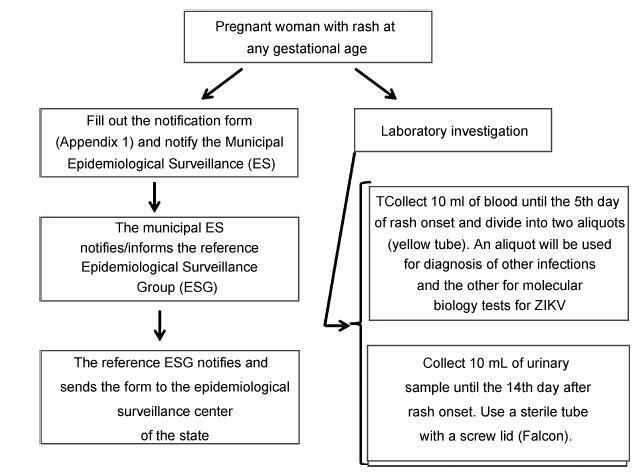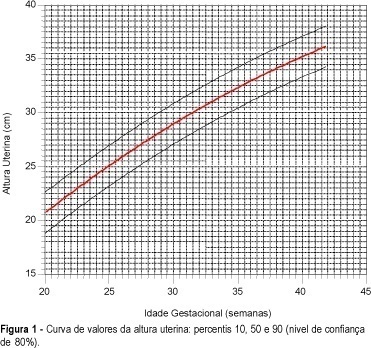Summary
Revista Brasileira de Ginecologia e Obstetrícia. 2000;22(4):235-238
DOI 10.1590/S0100-72032000000400008
Purpose: to evaluate thermal balloon endometrial ablation in the management of menorrhagia. Study design: twenty patients were submitted to endometrial ablation using the thermal balloon device, between June 1996 and June 1997. Local anesthesia was used in 16 patients. The device was introduced into the uterine cavity. The duration of the procedure was 8 minutes and 30 seconds. Results: two patients (10%) did not show improvement of the symptons. Eighteen patients (90%) referred improvement of symptoms. There was no complication during and after the procedure. Conclusions: The thermal balloon seems to be safe and efficient in the management of menorrhagia.
Summary
Revista Brasileira de Ginecologia e Obstetrícia. 2017;39(5):235-248
From the discovery of the Zika virus (ZIKV) in 1947 in Uganda (Africa), until its arrival in South America, it was not known that it would affect human reproductive life so severely. Today, damagetothe central nervous system is known to be multiple, and microcephaly is considered the tip of the iceberg. Microcephaly actually represents the epilogue of this infection’s devastating process on the central nervous system of embryos and fetuses. As a result of central nervous system aggression by the ZIKV, this infection brings the possibility of arthrogryposis, dysphagia, deafness and visual impairment. All of these changes of varying severity directly or indirectly compromise the future life of these children, and are already considered a congenital syndrome linked to the ZIKV. Diagnosis is one of the main difficulties in the approach of this infection. Considering the clinical part, it has manifestations common to infections by the dengue virus and the chikungunya fever, varying only in subjective intensities. The most frequent clinical variables are rash, febrile state, non-purulent conjunctivitis and arthralgia, among others. In terms of laboratory resources, there are also limitations to the subsidiary diagnosis. Molecular biology tests are based on polymerase chain reaction (PCR)with reverse transcriptase (RT) action, since the ZIKV is a ribonucleic acid (RNA) virus. The RT-PCR shows serum or plasma positivity for a short period of time, no more than five days after the onset of the signs and symptoms. The ZIKVurine test is positive for a longer period, up to 14 days. There are still no reliable techniques for the serological diagnosis of this infection. If there are no complications (meningoencephalitis or Guillain-Barré syndrome), further examination is unnecessary to assess systemic impairment. However, evidence is needed to rule out other infections that also cause rashes, such as dengue, chikungunya, syphilis, toxoplasmosis, cytomegalovirus, rubella, and herpes. There is no specific antiviral therapy against ZIKV, and the therapeutic approach to infected pregnant women is limited to the use of antipyretics and analgesics. Anti-inflammatory drugs should be avoided until the diagnosis of dengue is discarded. There is no need to modify the schedule of prenatal visits for pregnant women infected by ZIKV, but it is necessary to guarantee three ultrasound examinations during pregnancy for low-risk pregnancies, and monthly for pregnant women with confirmed ZIKV infection. Vaginal delivery and natural breastfeeding are advised.

Summary
Revista Brasileira de Ginecologia e Obstetrícia. 2007;29(5):235-240
DOI 10.1590/S0100-72032007000500003
PURPOSE: to establish the prevalence of thrombophilic factors in infertile women. METHODS: a cross-sectional study was performed, in which infertile women, seen in a private clinic with investigation for thrombophilia were included, according to the protocol of the clinic, between March 2003 and March 2005, after the approval of the Research Ethics Committee of the Universidade Estadual de Campinas (UNICAMP). One hundred and forty-four infertile women without any liver disease were evaluated. Infertility is defined as one year of unprotected sexual intercourse without conception. The acquired and/or inherited thrombophilic factors investigated were: anticardiolipin antibody (aCL), lupus anticoagulant (LA), protein C deficiency (PCD), protein S deficiency (PSD), antithrombin III deficiency (ATD), presence of the factor V Leiden, mutation G20 210A in the prothrombin gene, and C677T mutation of methylene tetrahydrofolate reductase (MTHFR). RESULTS: the prevalence values obtained for aCL and LA were 2%. The prevalence of the hereditary thrombophilic factors were: PCD=4%, PSD=6%, ATD=5%, factor V Leiden=3%, prothrombin mutation=3%, MTHFR mutation=57%. Conclusions: of the 144 patients selected, 105 women (72.9%) presented at least one thrombophilic factor. This reinforces the importance and justifies the need of investigation in this group.
Summary
Revista Brasileira de Ginecologia e Obstetrícia. 2001;23(4):235-241
DOI 10.1590/S0100-72032001000400006
Purpose: to create a uterine height growth curve, according to gestational age, to verify differences among the existing curves and to evaluate the influence of color, parity and maternal weight on the variation of uterine height. Methods: during the period from July 1997 to July 1999, 100 normal pregnant women were submitted to uterine height measurements between the 20th and 42nd week of gestation. All the pregnant women had ultrasonically confirmed gestational age. A total of 726 measurements of uterine height were carried out by the same examiner, using a metric tape from the upper border of the symphysis pubis to the fundus uteri. Results: curves and tables of uterine height according to gestational age were obtained. The average uterine height growth was 0.7 cm/week. The study revealed different average uterine height values in relation to other uterine height growth curves. No statistically significant variations were found between the distributions of uterine heights according to color, parity and weight. Conclusion: the construction of a methodologically accepted uterine height growth curve aimed to detect, as a clinical method, the fetal growth disturbances. This should be analyzed in a posterior study.

Summary
Revista Brasileira de Ginecologia e Obstetrícia. 1999;21(4):235-238
DOI 10.1590/S0100-72031999000400009
We report a case of nonmolar fetal triploidy detected by fetal blood sampling at 20 weeks of gestation, performed as an investigation of intrauterine growth retardation and severe oligohydramnios found by ultrasound scan. At 19 weeks of gestation very low levels of maternal free serum beta-subunit of human chorionic gonadotropin and unconjugated estriol, and normal levels of alpha-fetoprotein were found, which were interpreted as a high risk of fetal Edwards syndrome. Fetal death supervened the day after fetal blood sampling, and the pregnancy was terminated by vaginal delivery induced by misoprostol and oxytocin, under epidural anesthesia. Chromosome study of the fetal blood cells showed a 69,XXX karyotype. The severe intrauterine growth retardation and macrocephaly noted on pathological review plus the very low levels of hCG and unconjugated estriol suggest a fetal gynoid triploidy case, caused by the fertilization of a diploid egg by a haploid sperm.
Summary
Summary
Revista Brasileira de Ginecologia e Obstetrícia. 2014;36(6):235-236